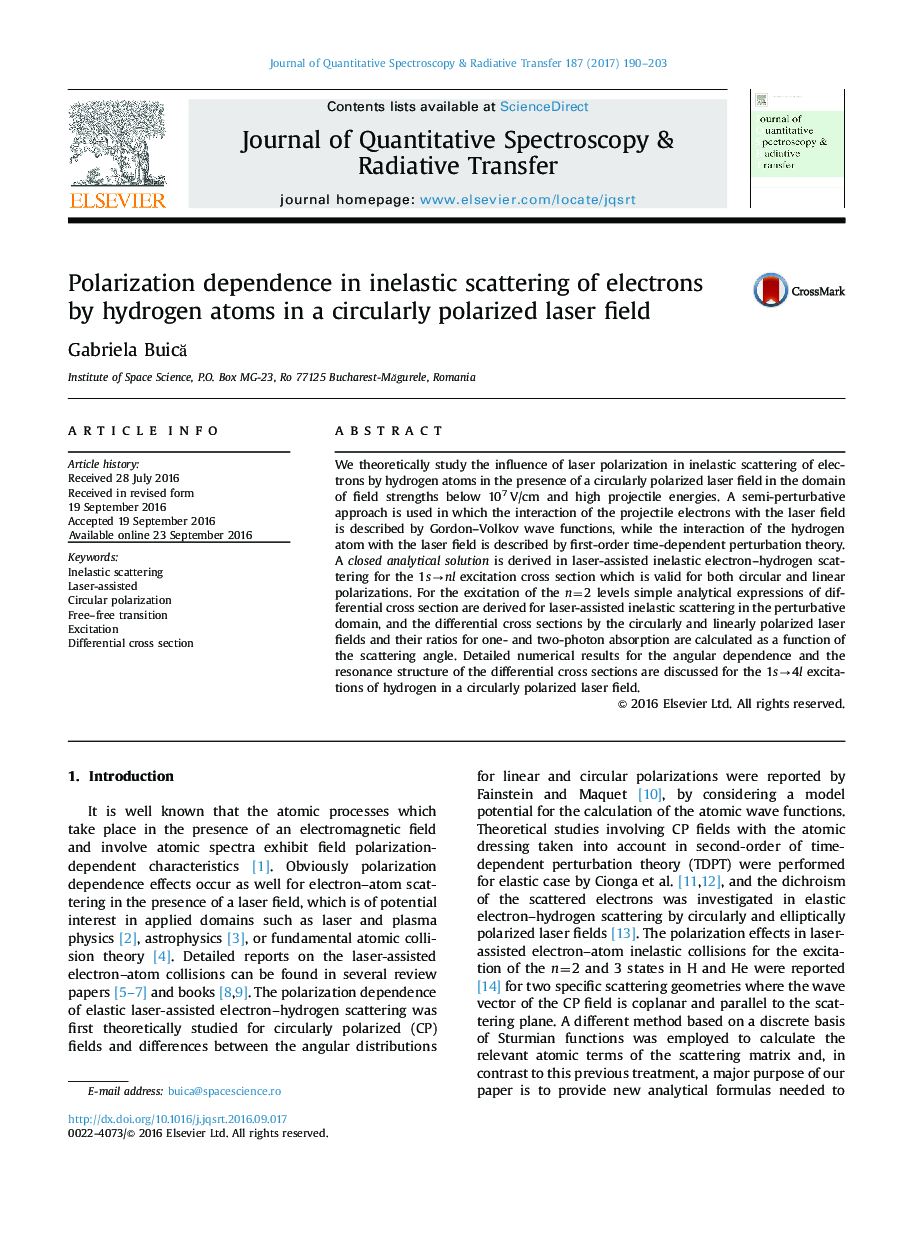| Article ID | Journal | Published Year | Pages | File Type |
|---|---|---|---|---|
| 5427437 | Journal of Quantitative Spectroscopy and Radiative Transfer | 2017 | 14 Pages |
â¢A closed analytical form of the DCS for circular polarization is derived.â¢The atomic dressing effects are taken into account.â¢The ratio of scattering signal for linear and circular polarizations is calculated.â¢By changing the laser field polarization the scattering signal can be modified.â¢We elucidated the origin of the peaks in the resonance structure of DCS.
We theoretically study the influence of laser polarization in inelastic scattering of electrons by hydrogen atoms in the presence of a circularly polarized laser field in the domain of field strengths below 107Â V/cm and high projectile energies. A semi-perturbative approach is used in which the interaction of the projectile electrons with the laser field is described by Gordon-Volkov wave functions, while the interaction of the hydrogen atom with the laser field is described by first-order time-dependent perturbation theory. A closed analytical solution is derived in laser-assisted inelastic electron-hydrogen scattering for the 1sânl excitation cross section which is valid for both circular and linear polarizations. For the excitation of the n=2 levels simple analytical expressions of differential cross section are derived for laser-assisted inelastic scattering in the perturbative domain, and the differential cross sections by the circularly and linearly polarized laser fields and their ratios for one- and two-photon absorption are calculated as a function of the scattering angle. Detailed numerical results for the angular dependence and the resonance structure of the differential cross sections are discussed for the 1sâ4l excitations of hydrogen in a circularly polarized laser field.
